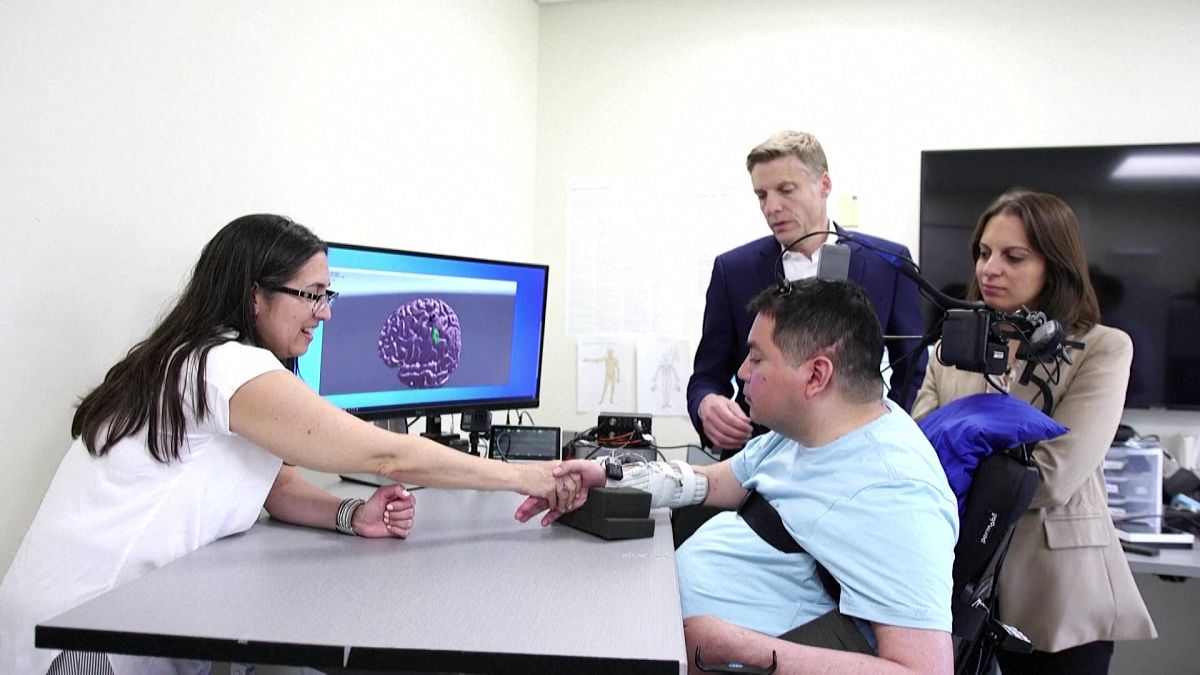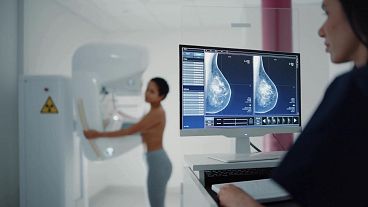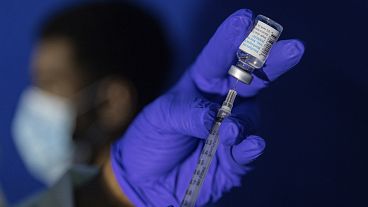Thomas can now scratch his face and wipe his nose, something his sister had to help him with previously.
In a world first, a quadriplegic man in the United States has regained touch and movement after surgeons successfully implanted microchips into his brain.
AI is then used to read, interpret and translate his thoughts into action.
Keith Thomas, 45, broke his neck in an accident and became paralysed from his chest down.
"I ended up in the hospital for eight months, which was very hard," he recalls.
He joined a clinical trial at the Feinstein Institutes for Medical Research in New York.
A team of medical professionals first spent months mapping Thomas’ brain using MRIs to help pinpoint the areas responsible for both arm movement and the sensation of touch in his hand.
He then underwent a 15-hour open-brain surgery.
‘Fooling the nervous system to make it work’
Dr Ashesh Mehta, the surgeon who performed Thomas' brain surgery said the wiring in Thomas’ brain was “broken”.
The surgical team had to rewire the pathways where electrical signals are sent between the brain, the body and the spinal cord.
"What we did was a bypass, so we bypassed the block. So, we're basically using a computer to read Keith's thoughts and then translate that into a machine that then stimulates his hand so that he can move it," explained Mehta.
The procedure - dubbed as a "double neural bypass" - goes the other direction as well. He can now "feel" something through tiny electrodes instead of neurons responsible for feeling his fingertips.
The tiny sensors at his fingertips and palm send touch and pressure information back to the sensory area of his brain implant to restore sensation through a computer instead of through the normal pathway through the spinal cord.
"It's almost like fooling the nervous system to make it work," said Mehta.
"What's happening and why we call it a double neural bypass is because we're not only reconnecting the brain to the body for movement and touch, we're also reconnecting the brain to the spinal cord," said Chad Bouton, the developer of the technology and principal investigator of the clinical trial and professor in the Institute of Bioelectronic Medicine at the Feinstein Institutes, and vice president of advanced engineering at Northwell Health.
Thomas is already starting to see some natural recovery from his injuries, which according to the surgeons, could reverse some of the damage he suffered from his accident for good.
Following the successful surgery, Thomas held his sister's hand and could feel her touch for the first time in three years. Both shed tears.
"To see the moment when Keith felt Michelle's hand, his sister's hand, I don't think there was a dry eye in the lab, including mine," said Bouton.
"They said I never would have feeling or movement. I'm in such a better place now than I was when I first started this study. And I just want to thank Bouton for giving me this opportunity," said Thomas.
Like training wheels
Thomas can now scratch his face and wipe his nose, something his sister had to help him with before the surgery.
The team at Feinstein Institutes hopes that Thomas’ brain, body and spinal cord will eventually relearn how to communicate, and new pathways will be formed at the injury site thanks to the double neural bypass.
Bouton says that this type of electronic bridge works like training wheels and helps retrain the spinal cord and strengthen connections within the cord so Thomas can gradually move and feel by himself.
"If we can awaken some of those circuits that are damaged and have been dormant for years, then the sky's the limit," he added.
For more on this story, watch the video in the media player above.



